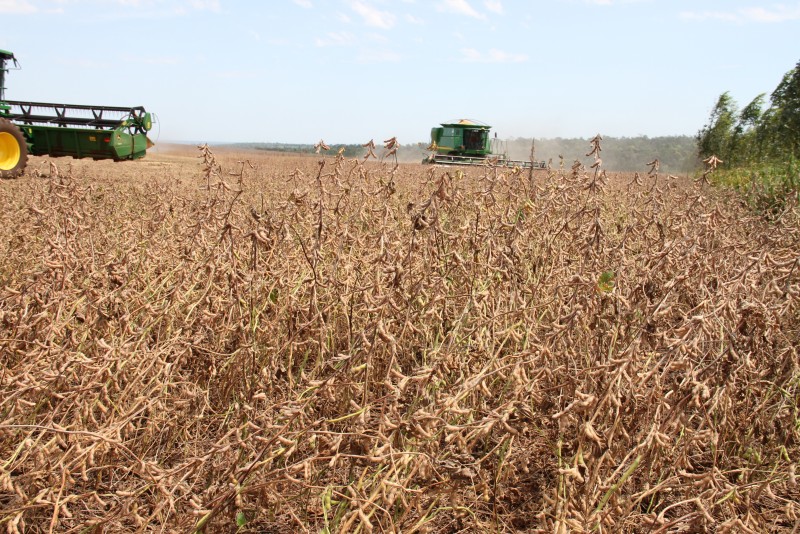RIO DE JANEIRO, BRAZIL – Exporters and livestock farmers warned of the severe impact of the drought in Paraguay, where the soybean harvest could shrink by up to 60% this year, and meat producers could face a shortage of pasture and suffer heavy losses due to forest fires.
The Paraguayan Chamber of Grain and Oilseed Exporters and Traders (Capeco) estimates that the soybean harvest could be reduced to 4 million tons for the 2021-2022 harvest due to the scarcity of rainfall.
According to Capeco’s executive director, Hugo Pastore, it would mean a 60% drop compared to the expected 10 million tons.

“At current soybean quotation values, that means approximately US$3 billion less that will not enter our economy,” Pastore detailed.
In the 2020-2021 period, soybean production reached 9,518,600 tons.
Paraguay, which is the world’s fourth-largest exporter of soybeans, had not seen similar figures since the 2011 and 2012 harvests, when the crop stood at 4,043,039 tons, according to Capeco, whose records date from 1996-1997.
According to Pastore, soybeans are the “boss car” of agricultural production in the country since in a “normal” year, the harvest can reach 10 million tons.
In addition, Paraguay can produce around 4 million tons of corn, approximately one million tons of wheat, and the same number of tons of rice.
In this context, the executive of Capeco, an entity that brings together exporters and traders, expressed his concern about the effects of the drought “in the whole chain” (banks, transportation, ports) and in the country in general.
“Years of good harvests are years of an economic bonanza for the country, and years of harvests with lower yields have the opposite effect, without any doubt”, he exemplified.
Pastore stressed that the drought, attributed to the La Niña climate phenomenon, has acquired a regional scope, with a good part of the Southern Cone of South America affected.
In particular, he mentioned the Brazilian states of Mato Grosso do Sul, Paraná, Santa Catarina, Rio Grande Do Sul, and areas in Bolivia, Argentina, and Paraguay.
The Paraguayan Rural Association (ARP) secretary-general, Mario Apodaca, warned that the “intense drought” damages the country’s livestock sector.
“If we do not have abundant rain (…), our pastures do not grow. As a result, the animal has little food,” he said and indicated that Paraguayan livestock production, based on grazing, highly depends on the weather.
The spokesman said that Paraguay has a herd of approximately 14 million head of cattle and some 150,000 producers, of which 80% have less than 100 head.
He indicated that 80% of the local meat production is exported to markets such as Chile, which receives about 40% of Paraguayan shipments, Russia, Brazil, some European countries, Arab Emirates, and Taiwan.
Apodaca considered that livestock farming is going through challenging times since the lack of pastures is compounded by the fires caused by the drought.
He cited statistics showing that the fires have devastated “the fields, hills, and the infrastructure”, such as fences, corrals, and other livestock buildings.

